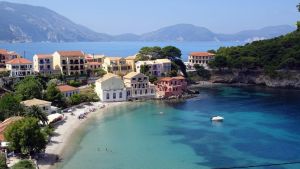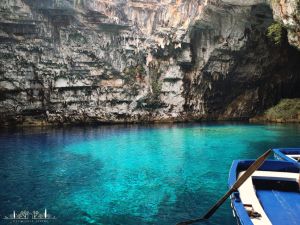Displaying items by tag: discover kefalonia
DISCOVERING THE GEOPARK OF KEFALONIA AND ITHACA
Do you know what a geopark is? It is an area with a geological, ecological, archaeological and cultural heritage of international importance for its scientific quality, rarity, aesthetics and educational value. The recognition of these local resources and the establishment of a geopark have the primary purpose of protecting this unique environment and promoting it to educate visitors of all ages, developing a conscious and sustainable ecological tourism. In Greece, nine sites of extraordinary beauty and geological variability have already been included in the global network of UNESCO geoparks and one of them is located right in Kefalonia and Ithaca.
PALIKI, A TREASURE TO DISCOVER AT THE END OF THE SUMMER
Kefalonia is among the ten largest islands in Greece and the largest of the Ionian Islands, so large that it has regions with their own landscape and cultural identity. On the western coast is the Paliki peninsula, separated from the main body of the island by a long, narrow bay. Lixouri, the main center of Paliki, can be reached both by ferry from Argostoli and by road with a panoramic route that runs along the inside of the bay revealing the unique beauty of the Livadi plain.
KEFALONIA, A NATURAL PARADISE TO SAFEGUARD
Did you know that Kefalonia is a natural paradise not only for those who come on holiday but also for the many animal and plant species that populate it? In addition to us, noisy human beings, and the famous Caretta Caretta turtles, the island is home to many species with a more discreet presence such as monk seals, dolphins, wild horses, falcons and many, many colourful insects. A short walk in the greenery (or sometimes, just a snack on the beach) is enough to enter a fascinating microcosm that is always on the move!
THE MYCENAEAN TOMBS OF KEFALONIA
The Mycenaean civilization flourished in Greece during the Late Bronze Age (1600-1100 BC). Sailors, shepherds and skilled warriors, in their travels the Mycenaeans brought with them their language and their customs, such as for example that of burying the deceased in large mounds containing well tombs. Tholos tombs were large circular rooms with a high vaulted roof and a straight entrance passageway lined with stone and were usually decorated with gold, silver and bronze. The deceased was often buried with daggers, gilded masks, diadems, armour and bejewelled weapons. These burial chambers are also mentioned in Homer's Iliad and Odyssey!
ON HOLIDAY IN KEFALONIA WITHOUT MEANS OF TRANSPORT?
It's possible, sure, but strongly discouraged. Kefalonia is a naturalistic paradise of 780 square meters, the largest of the Ionian islands. It would really be a shame to spend your stay in just one location given the scenic richness of Kefalonia and the distribution over the entire surface of the island of characteristic villages, traditional festivals and excellent taverns not to be missed.
ROMAN KEFALONIA, THE ARCHEOLOGICAL SITES OF FISKARDO AND SKALA
For us Italians, lucky inhabitants of a country rich in historical finds unique in the world and incredible architectural beauties, the discovery of Roman settlements during an excavation activity does not represent a rare and particularly significant event. Should you therefore visit the Fiskardo cemetery and the Roman villa of Skala during your holidays in Kefalonia? Absolutely yes! Coming across Roman finds abroad, in addition to demonstrating that we are not the first "Italians" to have fallen in love with this enchanting island, reminds us how intertwined the history of Mediterranean countries is and how much these contacts have enriched all the civilizations involved... And if you're traveling with little explorers, this break from the beach is sure to be a great adventure for them!
KEFALONIA, WHAT TO SEE IN 7 DAYS ON THE ISLAND?
How many days does it take to visit Kefalonia? You may not like the answer: many, many more than you are likely to have available. Not only for the size of the island and therefore the large number of beaches, villages and postcard views not to be missed, but also because a holiday in Kefalonia can become a state of mind: the island should be savored slowly, between a coffee and a souvlaki, because its relaxing atmosphere is even better than its exceptional beaches.
KEFALONIA, A 4 HOURS TOUR IN THE CENTER OF THE ISLAND (MONASTERY OF SAINT GERASIMOS, LAKE OF MELISSANI, CAVES OF DROGARATI, AGIA EFIMIA, MYRTOS BEACH)
Donkeys trudging along steep cobblestone streets, blue and white houses, bougainvillea pergolas, elderly people with sun-baked skin playing tavli (backgammon) sitting outside a tavern ... in the collective imagination, the Greek islands are all the same. Kefalonia is the best place to realize how different this tourist representation is from reality. A few days will not be enough to visit this corner of paradise! Beaches washed by turquoise waters, pine forests and aromatic plants, picturesque fishing villages in pastel colours overlooking the sea… The largest of the Ionian islands offers a lot to those who want a holiday in contact with unspoiled nature but also to contemporary history enthusiasts.








